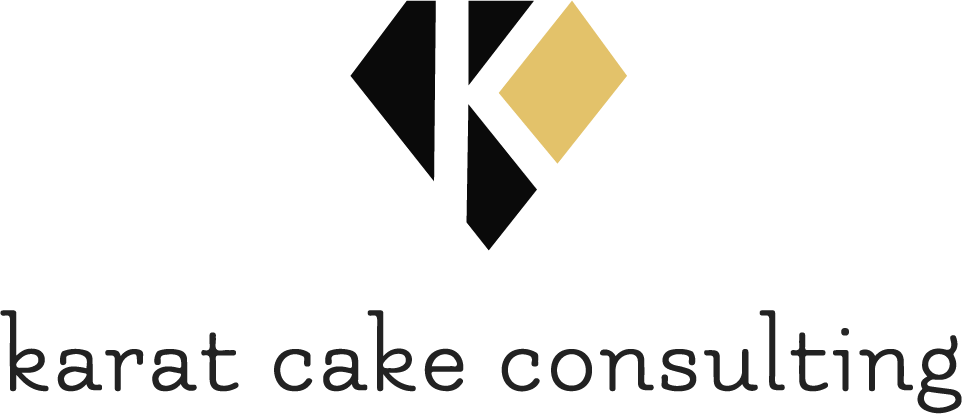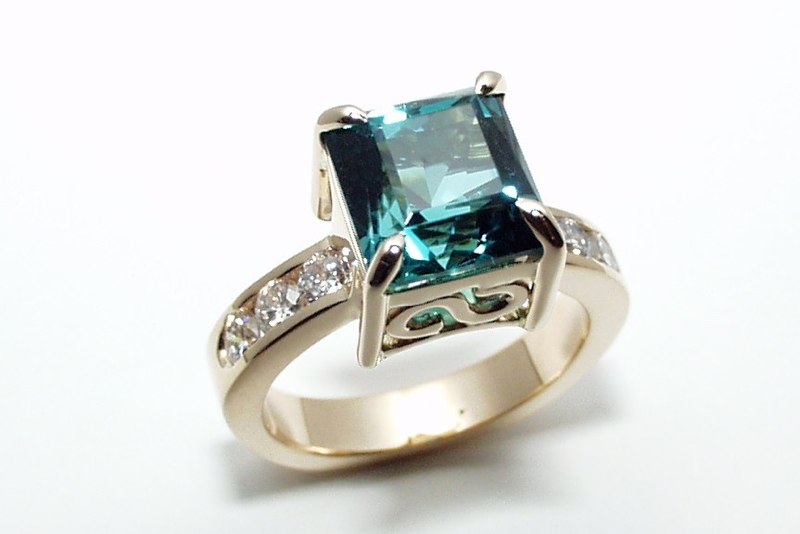"An educated consumer is a good consumer." That's a ripe old retail adage if ever I've heard one, but its staying power comes from the ring (hah!) of truth. In jewelry, it's always clear to me when a customer is armed with knowledge because he or she feels confident in the value of the purchase before I've had to say a word. It makes the job of the salesperson easier, for sure, but it also increases both initial and repeat business. Value and trust are the cornerstones of this industry, and a customer's perception of how well a business represents those factors will make or break the sale in the end. The educated customer has information confirmed, and so is far more inclined to trust.
You're nodding your head, yes yes, we know this. Consumers buy expensive things based on trust when their knowledge runs out. How is this relevant to your pithy and not-very-inventive post title?
Where I work, we have a goldsmith. Correction: we have an amazing, fabulous, absolutely one-of-a-kind goldsmith who is capable both of incredible craftsmanship and innovative design. She works brilliantly with customers to morph their garbled, elaborate, and frequently contradicting design concepts into workable pieces of unique, wearable art. While I could write for days on how she creates these wonderful pieces (and believe me, I will in the future) I'd prefer to focus just now on her designs. Her custom designs.
At a custom appointment, customers might pull elements from existing pieces. Frequently it's easier -- and less confusing -- for a customer to see/touch/feel what we mean by a split shank with bead-set diamonds and milgrain edge. (Try describing a bypass ring clearly and concisely to someone. Go ahead, try it.) But just as often, a design is created that is so unique, so deliciously original or specific, that it must be drawn and rendered in 2-or-3-D to demonstrate how it will look as a finished piece. The work our jeweler extraordinaire creates is, by definition, custom. It's one-of-a-kind. Singular. Unique. Exclusive.
Do you know what it isn't? A choose-your-own-ending, swap-in/swap-out, one-in-ten piece of jewelry that, while certainly beautiful, is in no way unique to the person who wears it. It's customized.
That center diamond you changed out for a sapphire? Customized. Ordered the 6mm wedding band instead of the 7mm and brushed the center? Customized. Princess center with square halo not your fave, so you did a round center and cushion halo? With the halo set in rose gold? You customized that, my friend. It's lovely, and it's exactly what you wanted.
It's still not custom.
Custom jewelry, in its uniqueness, carries a particular cachet. It's typically the most expensive option -- every cent of the design, casting, production, finishing, and appraising cost goes to one consumer instead of many -- and it comes with its own special set of challenges (matching wedding band, anyone?).
Customized jewelry takes a central design and makes limited changes. These tweaks and alterations can obviously change the look of the entire piece, giving the impression of a unique item, but the fact remains that another person could be making identical changes in a store down the street. These customized beauties are no less valuable to the people giving, receiving, and enjoying them. But they should never, ever be confused with true custom work.
We face the question over and over: why is the estimate to make this custom ring X price, when this other ring in the showcase is Y price? Enter the aforementioned education. We take the time to explain in great detail the differences found in custom jewelry, and what makes the value of such a piece incomparable to a stock or customized item.
I refuse to turn this post into a rambling diatribe against jewelry stores that market their swap-style design changes as custom. It's inaccurate at best and downright misrepresentation at its most insidious; customers looking around are unable to comparison shop with any kind of confidence. Or trust. And we know that's a bad thing for all parties. But it happens a whole lot these days, thanks to the advent of various computer programs that trumpet their "custom" design capabilities.
In the end, the goal is a happy customer. Getting there through honest dealings, thorough education, and a touch of jeweler's magic is how we choose to do it -- and it works.

